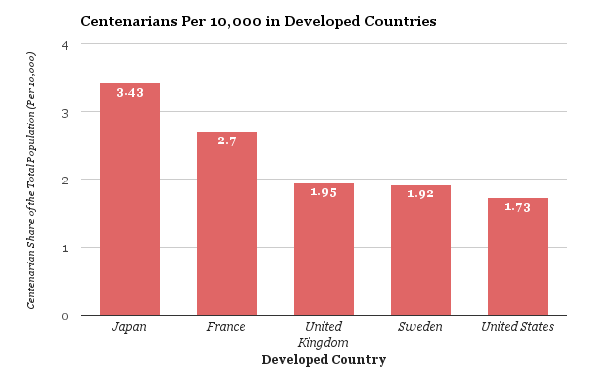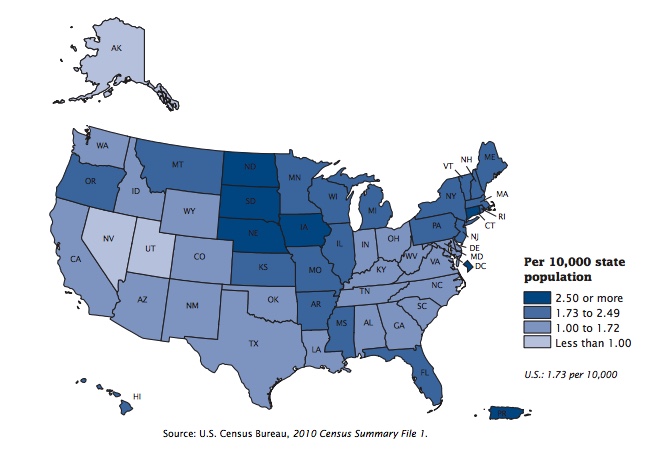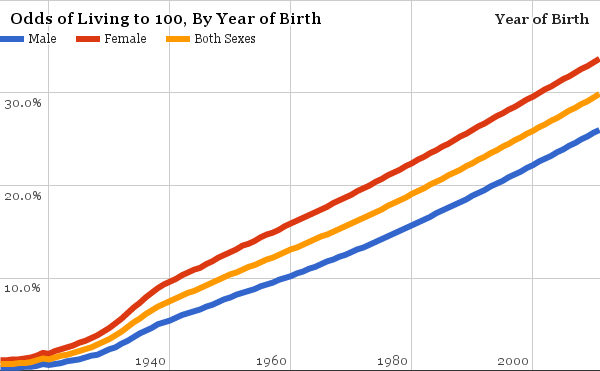By DiscoverTheOdds.com
Updated April 28, 2025
Relative to the course of human history, and even in light of the Covid-19 pandemic, life expectancy is up. Thanks to a number of factors, including advances in our understanding of health, wellness, and longevity, people are living longer than ever. Nonetheless, living to the age of 100 remains a remarkable and somewhat rare feat. But, just how rare?
The short answer: Less than 1%. People living to the age of 100 or older, referred to as centenarians, make up less than one percent of the U.S. population.
- Research increasingly reveals that a number of variables impact the odds of living to 100 such as mindset, daily activity, diet, and genetics.
- The odds of living to 100 vary by geography, with differences in longevity seen across states within the United States and also globally, from country to country.
- The odds of living to 100 are higher for women in comparison to men.
- The odds have changed over time and across generational cohort
Contents
- 1 The role of mindset, activity, food, and genetics
- 2 Big picture perspectives: Geography, gender, and generation
- 3 Centenarians around the world
- 4 Centenarians in the United States
- 5 Centenarians across states and regions in the U.S.
- 6 Map: Centenarians by state
- 7 The odds dramatically higher for women than for men
- 8 The odds of living to 100 change over time and generational cohort
- 9 Share this
The role of mindset, activity, food, and genetics
The best-selling book, Ikigai: The Japanese Secret to a Long and Happy Life, draws inspiration from interviews with the residents of a Japanese village that boasts the highest percentage of 100-year-olds. The book emphasizes the importance of having a strong sense of purpose and meaning in our daily lives, referred to in Japanese as “ikigai” or “reason for being.”
In his widely read and highly influential, The Blue Zones: 9 Lessons for Living Longer from the People Who’ve Lived the Longest, Dan Buettner invited readers to discover ways people all over the world have increased their odds of living to 100. The 2022 follow-up cookbook, The Blue Zones American Kitchen: 100 Recipes to Live to 100, encourages American readers to unearth tasty ways to support their longevity right at home.
DiscoverTheOdds.com may earn commissions from purchases made through the links on this site. These commissions help cover the expenses of maintaining the website and creating valuable content for you. Thank you for your support.
Big picture perspectives: Geography, gender, and generation
Centenarians around the world
The United States falls behind other developed countries in terms of the proportion of centenarians to the total population:

Centenarians in the United States
According to the U.S. Census Special Report on Centenarians, in 2010, there were 53,364 centenarians in the United States or 1.73 per 10,000 people in the total population. The Centenarian Special Report also shed light on a few interesting facts about centenarians alive today:
Centenarians across states and regions in the U.S.
There are state and regional differences within the United States in terms of just what share of the population has reached the 100-year mark. For instance, centenarians comprise a higher proportion of the total regional population in the Midwest and Northeast and a lower share in South and the West.
Map: Centenarians by state

The odds dramatically higher for women than for men
While life expectancy has risen overall, women continue to live longer than men, a trend that is reinforced in current data on centenarians. Women make up 82.8% of individuals age 100 years and older while men make up just 17.2%.
The odds of living to 100 change over time and generational cohort
Overall, the trend for life expectancy is one of increase. Since 1970, life expectancy in the U.S. has risen by nearly a decade, from 70.8 years to 79 years today. Additionally, in 2011 in the United Kingdom (where life expectancy is 81 years old, roughly two years higher than in the United States), the Department for Work and Pensions released a report listing the chances of living to age 100 by year of birth:

